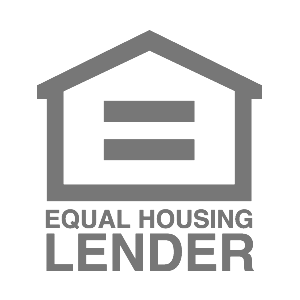
There are some things you should only do in an emergency: mouth-to-mouth resuscitation, the Heimlich maneuver and cashing out a 401(k).
Okay, maybe that’s dramatic. Then again, early withdrawals from your retirement can truly damage your finances. That’s because cashing out a 401(k) is not only expensive, but it also hurts your ability to retire.

Get the cash you need with a low-interest personal loan today
In addition to losing out on retirement savings and potentially delaying your retirement, you’ll likely end up owing money to the IRS and paying a 10% early distribution tax. However, the penalties are less harsh if you use the cash for a qualified emergency.
In This Article
Five reasons for cashing out your 401(k)
Taking money out of your 401(k) is truly a last resort since there’s no way to avoid paying federal (and sometimes state) income taxes on the amount you withdraw.
But you might avoid a second cost—the IRS’s 10% early distribution penalty—if you use the money for one of these reasons:
Hardship expenses
If you have what the IRS calls an “immediate and heavy financial need,” there’s a chance you won’t have to pay the 10% early withdrawal fee. Qualifying reasons to have the fee waived include:
-
- Medical care
-
- College tuition, room and board
-
- Eviction or foreclosure prevention
-
- Funeral expenses
-
- Repairing damage to your home
-
- Total and permanent disability
The amount you can withdraw can’t be more than what you need to cover the hardship plus the taxes.
Home purchase
This withdrawal reason technically falls into the hardship category, but it’s worth calling out. If you use the funds to cover expenses directly related to buying a home, such as a down payment and closing costs, the 401(k) early withdrawal penalty can be waived.
Federally declared disaster
Thanks to the SECURE 2.0 Act of 2022, people who live in federally declared disaster areas (as announced by the President) can get tax relief on their withdrawals. You can withdraw up to $22,000 without incurring the 10% penalty.
You’re over 59 ½
Once you reach the age of 59 ½, you can start withdrawing funds without facing penalties. Of course, you’ll still pay income taxes on the 401(k) withdrawals, but if you don’t take the required minimum distribution, the IRS can charge you a penalty of 25% of the amount you don’t take.
Roll over
The only way you can take money out of your 401(k) without any taxes or fees is if you perform a “rollover,” meaning you have the money transferred directly to another retirement account, such as an Individual Retirement Account (IRA) or a new 401(k).
This type of transaction may be taxable if the funds are sent directly to you rather than the financial institution.
Key considerations before cashing out
The big question you need to answer before cashing out a 401(k) or even taking a 401(k) loan is, “How much will it cost?” Chances are, it’s the most expensive option you have.
How can you calculate the cost? The IRS may automatically withhold 20% of the withdrawal amount to cover your tax bill. If you cash out $90,000—roughly the average balance U.S. consumers have in their 401(k)s—the IRS will withhold $18,000.
If that amount doesn’t cover your full tax bill, you’ll have to pay the remainder at tax time. Otherwise, you will receive a refund. Whether or not you’ll have to pay more depends on your income and whether or not you’re in an IRS tax bracket above 20%.
For 2024, people who earn over $47,150 will pay more, since their tax brackets start at 22%. Additionally, you may have to figure in the 10% early 401(k) withdrawal penalty.
For example, if you earn $60,000 a year, you’ll be in the 22% income tax bracket. If you want to make a non-emergency withdrawal of $25,000 from your 401(k), here’s an estimate of how much the withdrawal will cost:
| 20% mandatory withholding | $5,000 |
| Remaining federal income taxes | $500 |
| 10% early distribution penalty | $2,500 |
| Total | $8,000 |
That’s a total cost of $8,000, not including your state income taxes. After settling those expenses, you’ll have at most $17,000 left.
The above calculation also excludes the interest you’ll lose in your 401(k). If your 401(k) earned an average return of 6.5% per year (including fees), a $25,000 balance would earn more than $10,400 in interest in five years and more than $25,000 in 10 years.
A few other considerations:
-
- Retirement savings: Do you have enough time to replenish your savings before retirement? Are you okay with the long-term consequences of the withdrawal, which could include delayed retirement?
-
- Voluntary contributions: Are you still contributing to your 401(k)? If so, pause your contribution and add the money to your emergency savings, so you won’t have to pay penalties for using that cash.
Pros and cons of cashing out a 401(k)
Pros
-
- Access cash for an emergency
-
- No penalties if used for a qualifying home purchase
-
- Unlike loans, you don’t need good credit scores to get the money
-
- Unlike loans, you don’t have to pay the money back
Cons
-
- Reduces your retirement savings balance
-
- Reduces the amount of interest you’ll earn before retiring
-
- The IRS has a 20% mandatory withholding
-
- You may have to pay a 10% early distribution tax (if you’re under age 59 ½)
-
- Income taxes apply to the withdrawal
-
- The withdrawal is considered income and can push you into a higher tax bracket
Alternatives to cashing out your 401(k)
Considering how costly it is to cash out your 401(k), you can likely find better options. Here are some alternatives to consider:
-
- Borrow from a loved one: Ask a friend or family member for a cash gift or a loan. Offer to put the terms of your agreement in writing.
-
- Take out a personal loan: Borrow the money to cover your expenses and pay it back in monthly installments. At the current average APR (11.92%), a $25,000, 24-month personal loan would cost you $3,221.67 in interest charges. Unlike a 401(k) withdrawal, this expense would be spread out over two years, and the loan would not reduce your 401(k) balance.
-
- Use your home equity: To get a significantly lower APR than a personal loan, consider using your home’s equity as collateral for a home equity loan or a cash-out refinance. Just make sure the up-front costs and payments fit into your budget, since missed payments can mean facing foreclosure.
-
- Look for down-payment assistance: For homebuyers, check to see if you qualify for a homebuyer program that gives you cash for your down payment and closing costs or a government-backed mortgage program that reduces your down payment requirement.
-
- Find a cosigner: If you can’t qualify for a loan on your own, perhaps due to bad credit, find someone willing to help you qualify by cosigning for you.
Think long-term
Cashing out your 401(k) is only worth considering when you’re facing a very limited set of circumstances. If you’re in an emergency, and it’s either your cheapest or your only way to get cash, withdrawing the money could give you the help you need.

Get the cash you need with a low-interest personal loan today
Just make sure the withdrawal doesn’t cause more problems than it solves. If you can’t afford to pay the tax bill that comes with your withdrawal, or you have to delay your retirement as a result of cashing out your 401(k), you’ll likely regret the decision.
Written by Sarah Brady
Sarah Brady is a financial writer and speaker who’s written for Forbes Advisor, Investopedia, Experian and more. She is also a former Housing Counselor (HUD) and Certified Credit Counselor (NFCC).
All personal loans made by WebBank.
Eligibility for a home equity loan or HELOC up to the maximum amount shown depends on the information provided in the home equity application. Depending on the lender, loans above $250,000 may require an in-home appraisal and title insurance. Depending on the lender, HELOC borrowers must take an initial draw of the greater of $50,000 or 50% of the total line amount at closing, except in Texas, where the minimum initial draw at closing is $60,000; subsequent HELOC draws are prohibited during the first 90 days following closing; after the first 90 days following closing, subsequent HELOC draws must be $1,000, or more, except in Texas, where the minimum subsequent draw amount is $4,000.
The amount of time it takes to get funds varies. It is measured from the time the lender receives all documents requested from the applicant and depends on the time it takes to verify information provided in the application. The time period calculation to get funds is based on the first 4 months of 2023 loan fundings, assumes the funds are wired, excludes weekends, and excludes the government-mandated disclosure waiting period.
For Texas home equity products through Prosper, funds cannot be used to pay (in part or in full) non-homestead debt at account opening.
Depending on the lender, qualified home equity applicants may borrow up to 80% – 95% of their primary home’s value and up to 80% – 90% of the value of a second home. In Texas, qualified applicants may borrow up to 80% of their home’s value. HELoan applicants may borrow up to 85% of the value of an investment property (not available for HELOCs).
Home equity products through Prosper may not be available in all states.
All home equity products are underwritten and issued by Prosper’s Lending Partners. Please see your agreement for details.
Prosper Marketplace, Inc. NMLS# 111473
Licensing & Disclosures | NMLS Consumer Access
